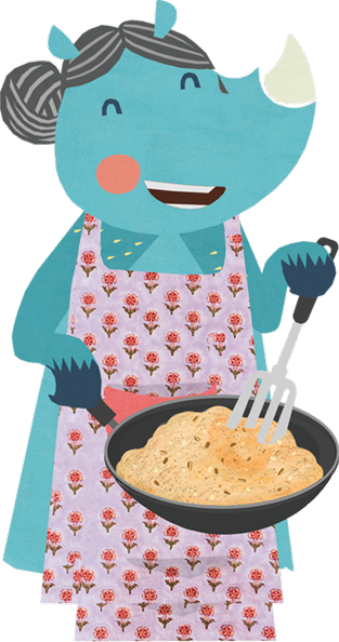Chewing is one of the key skills you need to help your little one develop. Although it is a reflexive action in any human being, it tends to fade away before babies turn a year old. Hence, please develop this skill in your baby as early as possible!
So how can you promote chewing in your little one?
1) Teethers are a fantastic way to encourage children to chew and overcome the gag reflex. We recommend using stick-shaped teethers called num-nums. As children begin to put these teethers in their mouth, they subconsciously start oral mapping, which can start as early as 4-5 months.
 Did You Know
Did You Know

2) Teething biscuits, toys, and foods that are stick-shaped are also great for practice. Toy carrots or baby corn are good to practice both chewing and biting. Stick-shaped teethers and toys are recommended because they go to the back of the mouth to where the molars will eventually erupt. Moreover, children can maneuver around their mouth freely, helping them gag less when starting solids. Teethers also strengthen oral muscles and sensitivity and awareness to different textures in their mouth.
As a parent, you may not prefer giving your child teethers. While this is okay, teethers merely speed up the process of chewing and preventing the gag reflex.
For parents who choose not to use teethers, seeing their child gag on purees can be a scary experience. It's natural to want to delay introducing solid foods to avoid this situation. However, delaying this important milestone can hinder your little one’s progress.
Teething Made Easy: Expert Tips for Choosing and Using Teethers

1) What should I do before I use a teether?
Disinfect the teether before giving them to your baby, placing them in their hand if they can grasp it. You can also let them chew on it. Rub wooden teethers with coconut oil to clean them and then wipe off excess oil before use.

2) When should I introduce teethers?
Generally, babies start teething between 4 to 7 months. Some teeth sooner, at 3 months. When they start teething, it’s time to introduce a teether.

3) What kind of teethers are good for my baby?
When buying teethers, look for food-grade silicone or food-grade plastic teethers. You can even try teethers made from 100% natural rubber, untreated natural hardwood/wood, or 100% organic cotton.

You can also opt for:
- wooden crocheted teethers with or without a rattle ring
- neem teether rattles
- baby toothbrush
Use your finger:
Massaging around their gums for one to two minutes using a clean finger soothes their pain and distracts them. It can also help you figure out what's going on in there.

If you don’t prefer buying teethers, that’s fine! Just make your own teethers at home. Here’s a list of homemade teethers:
- cold carrot sticks
- cucumber sticks
- apple sticks
- frozen washcloth with lemon or orange juice
- ripe jackfruit bulb
- cut fruits like bananas or mangoes into chunks and freeze them
Using teethers, stick-shaped toys, and foods, as well as massaging their gums, are excellent ways to help babies build their chewing skills.
Tomorrow, we will share some common misconceptions about starting solids for babies.

















